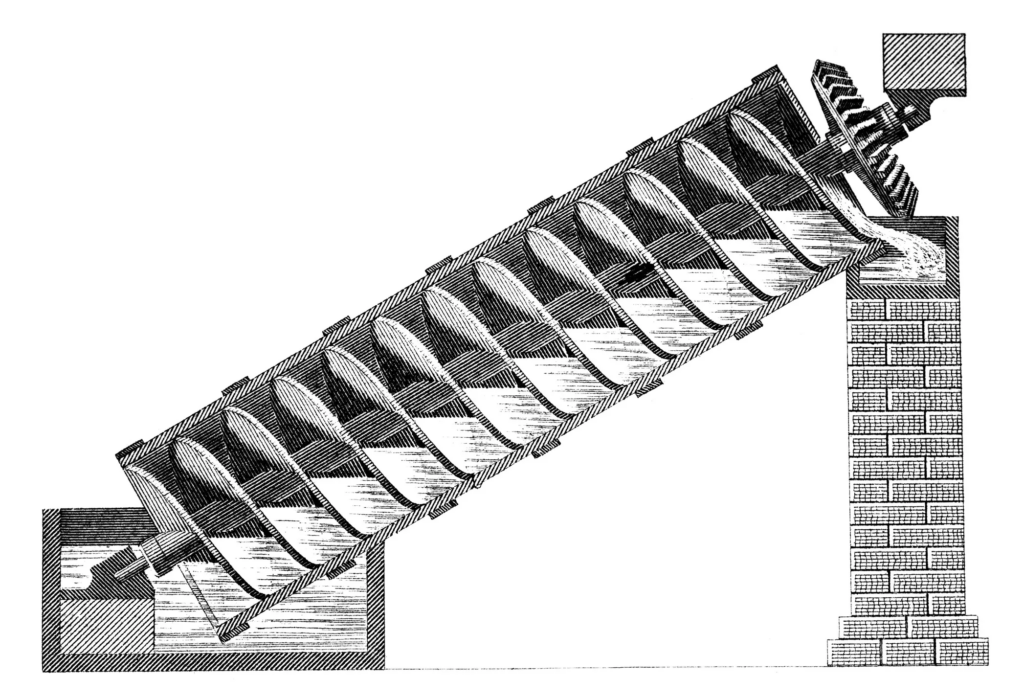ANSI/HI 14.6-2022: Rotodynamic Pumps
In 250 BCE, Ancient Greeks and Romans used a device called the Archimedes screw: the first water pump, which was shaped as a giant screw and used to raise water. ANSI/HI 14.6-2022: Rotodynamic Pumps For Hydraulic Performance Acceptance Tests provides critical performance test procedures for rotodynamic pumps to ensure they are safe to use.
In 250 BCE, Ancient Greeks and Romans used a device called the Archimedes screw: the first water pump, which was shaped as a giant screw and used to raise water. ANSI/HI 14.6-2022: Rotodynamic Pumps For Hydraulic Performance Acceptance Tests provides critical performance test procedures for rotodynamic pumps to ensure they are safe to use. Invention of the Water Pump: Archimedean Screw Although some may cite the Ancient Egyptians as the inventor of the first water pump in 2,000 BCE, their pump (shadoof) was a bucket tied to a rope that removed water from a well for irrigation. Archimedes (237-212 BCE), a Greek mathematician and inventor, invented the Archimedean screw, a form of a positive-displacement pump—a pump that traps fluid forma source and then forces the fluid to move to a discharge location. What would prompt Archimedes to invent this pump?
Here is the story of the Archmedes Screw:
The King Hiero of Syracuse requested that Archimedes build the largest ship possible. Due to the ship’s size and weight, it was leaky. Consequently, Archimedes invented a device, the Archimedean screw, to remove water from it. This machine consisted of a hollow tube, containing a spiral that could be turned by a handle at one end. When the lower end of the tube was placed into the hull and the crank was turned, water was carried up the length of the tube and released out of the tube’s upper end and thereby the ship. The Archimedes screw was soon also used to move water from low-lying areas to irrigation ditches.

The ANSI/HI 14.6-2022 Standard for Rotodynamic Pumps
ANSI/HI 14.6-2022 covers hydraulic performance tests for the acceptance of rotodynamic pumps: centrifugal, mixed flow, and axial flow pumps. Specifically, the American National Standard provides acceptance criteria and uniform test procedures for performance, net positive suction head, hydrostatic pressure testing, data recording and reporting of test results for rotodynamic pumps. These tests include the Net Performance Suction Head (NPSH), mechanical, and factory performance. The standard details the permissible fluctuations per acceptance grade per test.
ANSI/HI 14.6-2022 measures various quantities like the rate of flow, differential head, discharge head, suction head, input power, speed of rotation, torque, and temperature during performance tests of rotodynamic pumps. It is intended for pump acceptance testing at pump test facilities that include manufacturers’ pump test facilities and laboratories.
What is a Rotodynamic Pump?
A pump is device used to move and/or pressurize fluids. A rotodynamic pump is a pump or that uses the rotation of a bladed impeller, rotor, or propeller that rotate within the fluid to continuously impart velocity to a liquid. It acts as a kinetic machine as its purpose is to convert energy into pressure energy of the fluid to be used in the piping system. After passing performance tests from ANSI/HI 14.6-2022 in pump testing facilities, rotodynamic pumps can be applied in the following industries:
- Agriculture: Irrigation, borehole, and land drainage
- Construction/building services: Pressure boosting, drainage, hot water circulation, air conditioning, boiler feed
- Brewery/Dairy: Fermentation Domestic: Hot water Metal manufacture: Mill scale, furnace gas rubbing, descaling
- Oil/gas production: Main oil line, tanker loading, water injection, seawater lift
- Power generation: Large cooling water, ash handling, flue gas desulphurization process, condensate extraction, boiler feed
- Wastewater: Raw and settled sewage, grit laden flows, storm water
- Water supply: Raw water extraction, supply distribution, boosting
This article was published by ANSI.org on 9/30/2022.
SUBSCRIBE TODAY
Get the latest pump industry news, insights, and analysis delivered to your inbox.
